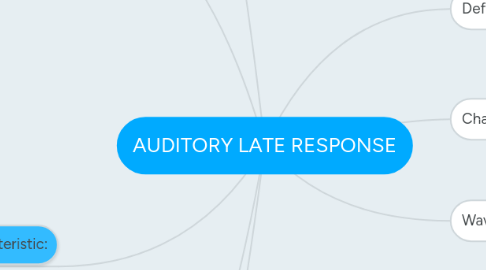AUDITORY LATE RESPONSE
par soma yahya


1. Stimulus types:
1.1. Tone burst
1.2. speech material such as \pa\ da\
1.3. clicks-not generally used
1.4. whole words (synonyms and antonyms) | usually occurs at late negative peaks N400
2. effects of the stimulus type on the overall responses:
2.1. 1- Low frequency --> late & large amplitude (N1 & P2)
2.2. 2- "processing negativity" peak occurs with only one frequency stimulus between 70-700 ms
2.3. 3- Using complex tones --> larger amplitude
2.4. 4- Using speech stimuli --> larger amplitude + later latency especially N1 &P2
2.5. 5- Speech stimuli --> larger amplitude in left hemisphere recording channel
2.6. 6- Tonal stimuli --> larger amplitude in right hemisphere recording channel.
3. Stimulus characteristic:
3.1. Duration: around 60-70 ms & 10 s for rise\fall | using short rise\fall ( less than 3-4 ms --> reduces ALR amplitude significantly)
3.2. Intensity: * Higher intensity --> larger amplitude and shorter latencies. * usually 60-70 dB HL *the amplitude of ALR is usually larger than other potentials ( ranges b.w 3-10 microvolt)
3.3. Rate: very slow rate - usually 0.7 to 1.7\sec
3.4. Contralateral competing presentation: leads to decrease in N1 amplitude | bilateral stimulation is negligible (insignificant) compared to Unilateral.
3.5. Recording parameters:
3.5.1. analysis time--> long 500-700 ms
3.5.2. sweeps -->15 to 50
3.5.3. filters --> 0.1 -100 Hz
3.5.4. Sites : 1) inverting -> earlobe.mastoid or nape of neck 2)Non-inverting --> Fz,Cz 3) Ground --> Fpz
